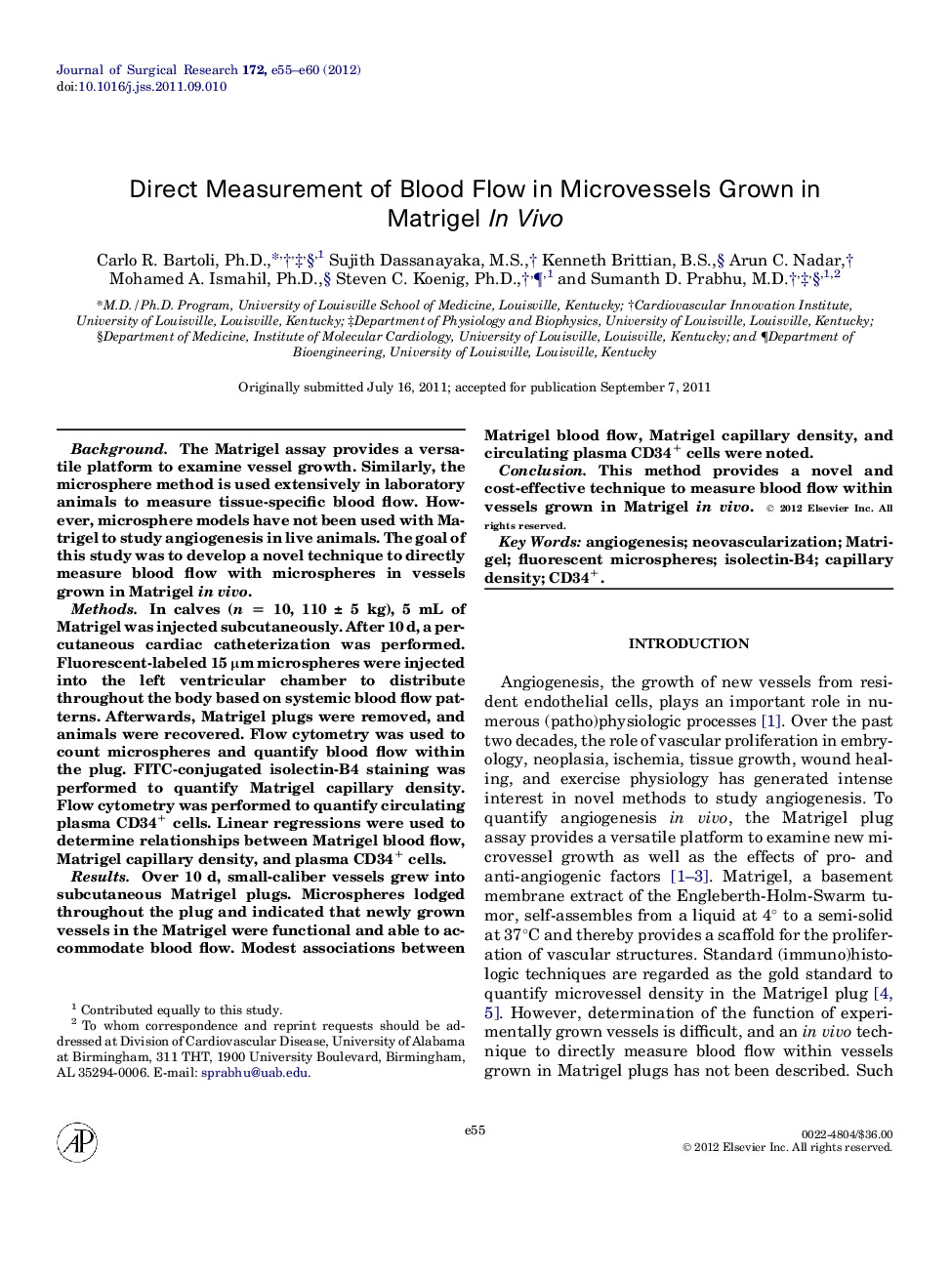| Article ID | Journal | Published Year | Pages | File Type |
|---|---|---|---|---|
| 4302000 | Journal of Surgical Research | 2012 | 6 Pages |
BackgroundThe Matrigel assay provides a versatile platform to examine vessel growth. Similarly, the microsphere method is used extensively in laboratory animals to measure tissue-specific blood flow. However, microsphere models have not been used with Matrigel to study angiogenesis in live animals. The goal of this study was to develop a novel technique to directly measure blood flow with microspheres in vessels grown in Matrigel in vivo.MethodsIn calves (n = 10, 110 ± 5 kg), 5 mL of Matrigel was injected subcutaneously. After 10 d, a percutaneous cardiac catheterization was performed. Fluorescent-labeled 15 μm microspheres were injected into the left ventricular chamber to distribute throughout the body based on systemic blood flow patterns. Afterwards, Matrigel plugs were removed, and animals were recovered. Flow cytometry was used to count microspheres and quantify blood flow within the plug. FITC-conjugated isolectin-B4 staining was performed to quantify Matrigel capillary density. Flow cytometry was performed to quantify circulating plasma CD34+ cells. Linear regressions were used to determine relationships between Matrigel blood flow, Matrigel capillary density, and plasma CD34+ cells.ResultsOver 10 d, small-caliber vessels grew into subcutaneous Matrigel plugs. Microspheres lodged throughout the plug and indicated that newly grown vessels in the Matrigel were functional and able to accommodate blood flow. Modest associations between Matrigel blood flow, Matrigel capillary density, and circulating plasma CD34+ cells were noted.ConclusionThis method provides a novel and cost-effective technique to measure blood flow within vessels grown in Matrigel in vivo.
